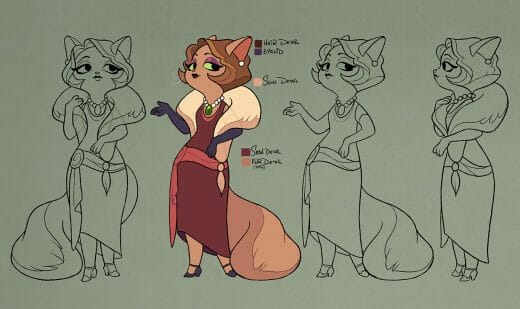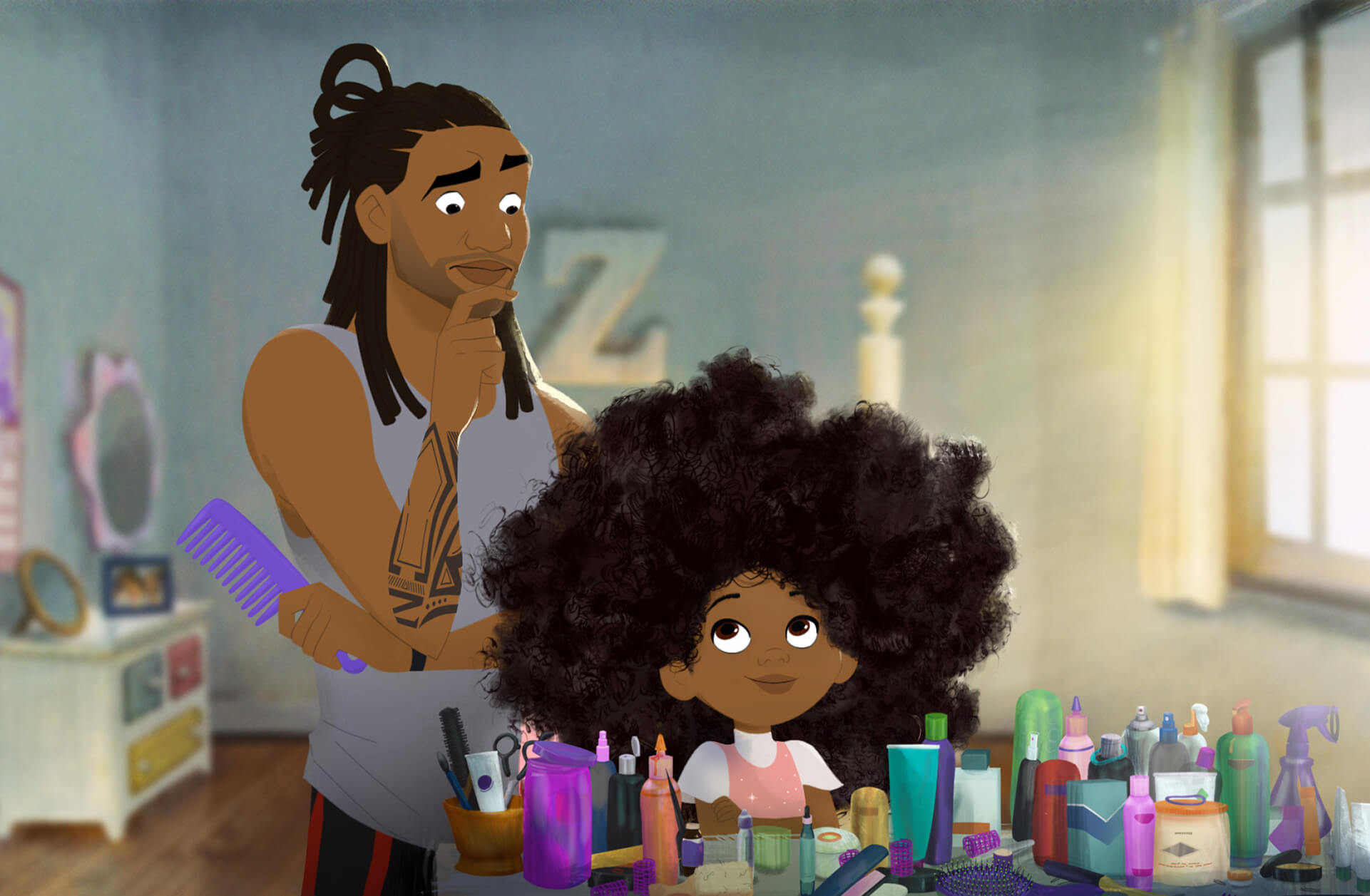
Last year, sixth grader Faith Fennidy was sent home because her braids violated her New Orleans school’s dress code, a week after six-year-old Florida boy C. J. Stanley was turned away from his classroom for the same reason. These are not isolated instances; African-American children have historically faced institutional prejudice towards their hairstyles, which is reinforced throughout their lifetimes by a media and beauty industry that often fail to represent them and recognize their needs. Creator Matthew A. Cherry hopes to change narratives and inspire the next generation with his animated short, Hair Love.
Hair Love was released in domestic cinemas ahead of Sony Picture Animation’s The Angry Birds Movie 2 on August 14. It began as a viral 2017 Kickstarter campaign, which raised over $284,000 against a goal of $75,000 — setting a new record for short films on the crowdfunding platform. It has also been turned into a best-selling children’s book by Penguin Random House.
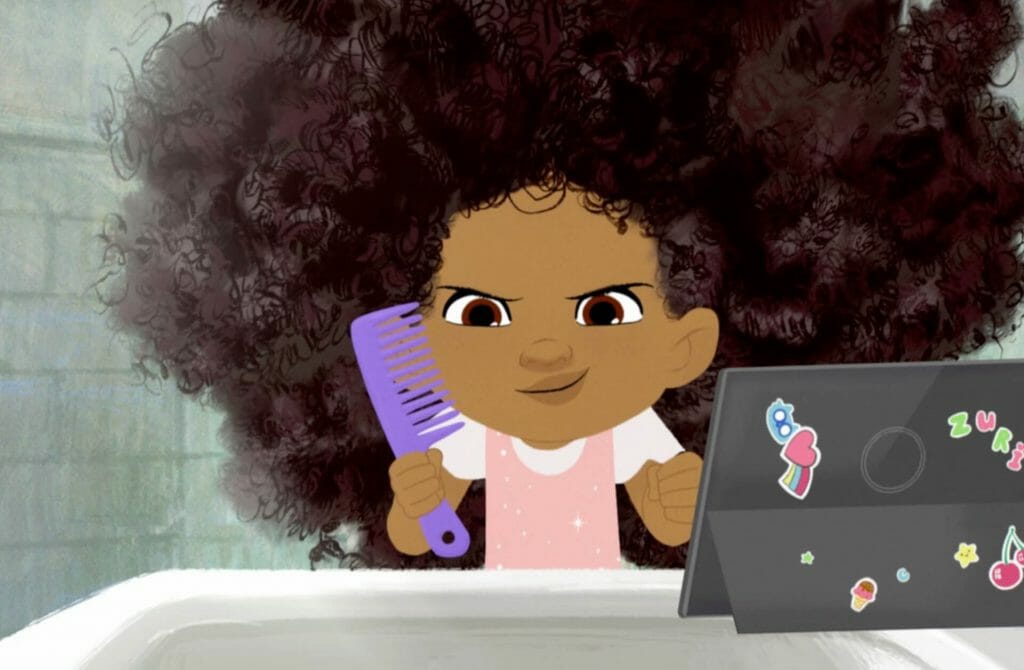
The animated short follows a dad who is combing through YouTube tutorials, brushing up on how to style his daughter Zuri’s afro, which seemingly has a mind of its own. Cherry tells us that he wanted to represent both African-American girls with curly hair and black dads, who often get portrayed unfairly by the media. In Zuri, he also hopes to create a heroine who looks like his young audience and normalizes their natural hair.
The response has been overwhelmingly positive, with Cherry recounting how people at the premiere told him this was their story, bringing their copies of the book and recreating poses from it on social media. He says, “I think the main reason [Hair Love] has resonated so much with the public and media is because we all can relate to having someone we love asks us to do something we don’t know how to do. The mere act of you trying to figure that out is a way for you to show them how much you love them.”
As artists, we are our own brands.
Matthew A. Cherry
Cherry is a former professional football player turned filmmaker, though Hair Love is the first time he’s tackled animation. He served as executive producer and co-director on the film, alongside Everett Downing (animator Up, WALL-E, Brave). Other EPs included Frank Abney and Peter Ramsey (Spider-Man: Into the Spider-Verse).
Producers included Karen Toliver of Sony Pictures Animation, who championed the project from the beginning, as well as Stacey Newton and Monica A. Young. Toliver tells us, “One of the things I love about Sony is we’re very open to exploring because people don’t know what to expect from us — and we like that. I really do think Hair Love was a great example of finding a filmmaker who hadn’t been in animation before and exposing him to it, and we’re going to do a lot more of that.”
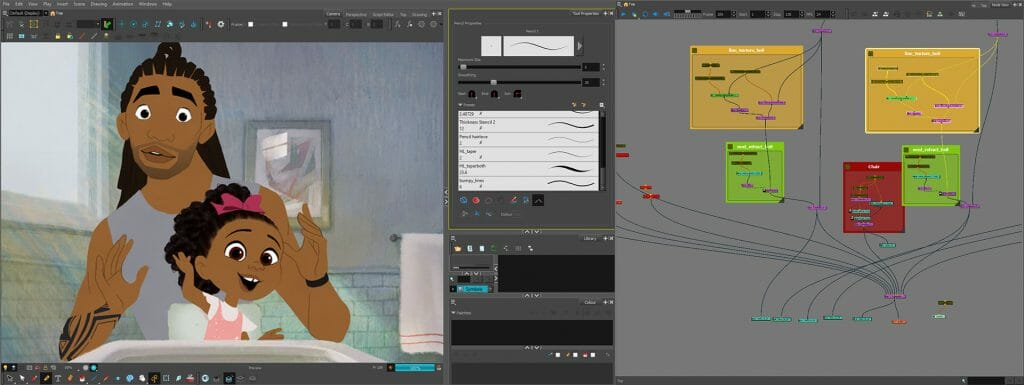
Initially, Cherry was worried the story would be too small for animation given it is set in a family home as opposed to a fantastical world. To help him untangle the toon storytelling process, Cherry turned to Ramsey. He says, “I sent [Ramsey] the script right before we did the Kickstarter campaign and asked if he thought it could work in animation. He told me, ‘Animation is just a medium — I think the story could work in any medium, but the fact that you have this fantastical element about the hair having a mind of its own, it does lend itself well.'”
Though Cherry originally wanted to do Hair Love in 3D, he discovered he could achieve much more with his budget using 2D animation. Plus, he wanted to pay homage to the hand-drawn toons he had grown up watching — particularly given the style’s resurgence in popularity thanks to streaming platforms and adult comedic content.
When it came time to do the animation, Cherry and Toliver turned to Los Angeles-based studio Six Point Harness, who produced Hair Love in a Toon Boom Harmony pipeline.
“It was a no-brainer for us — we’re always attracted to stories that are unique and new and socially relevant,” says Greg Franklin, creative director at Six Point Harness.
He continues, “There’s a huge market out there that’s underserved for this kind of material and when something comes along like Hair Love, people are thirsty for it. Bigger entertainment companies are realizing there’s a hunger for diverse content that they may have previously dismissed as niche.”
From Spider-Man: Into the Spider-Verse to the live-action Black Panther, the correlation between diversity and dollars at the box office is getting bigger by the blockbuster. That said, even seasoned animators can discover new challenges when creating something as distinctive and unique as a semi-sentient afro.
Franklin recalls, “From a technical aspect, we had a character with voluminous hair that was very complex. As an animator, that’s a lot of details that you’ve got to track. That itself was a big technical challenge: finding ways to depict that while keeping the quality high and the effort invisible.”
“Also, as somebody who wants to bring authentic stories, I kept my ears open and sat back and listened to make sure I knew what was important to come across on screen,” he continues.
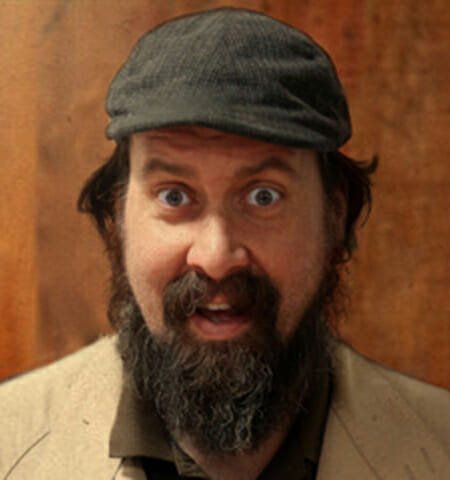
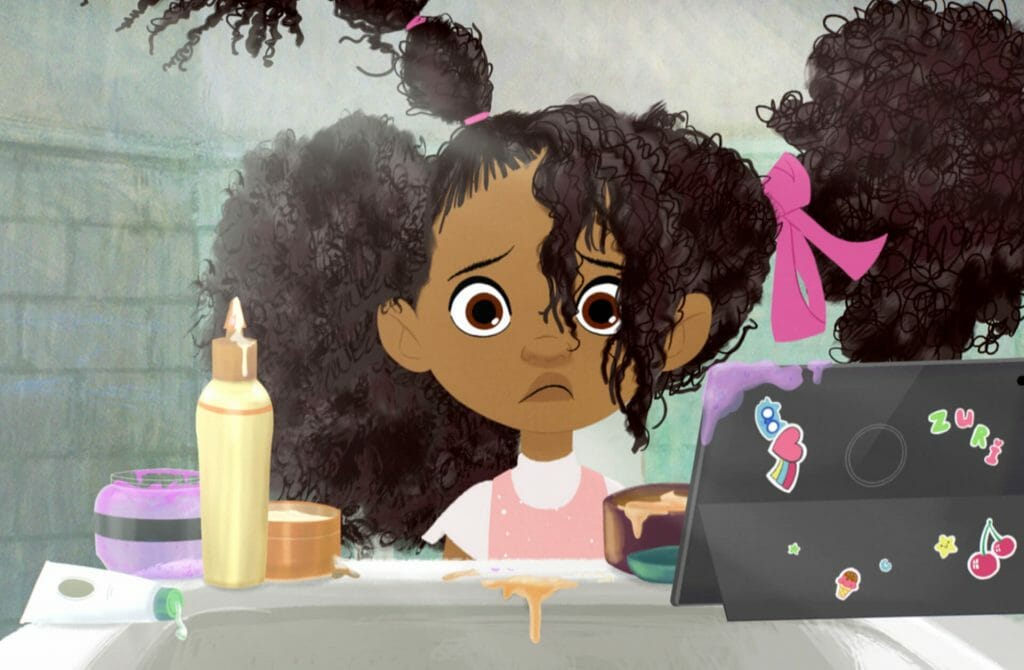
This is seconded by Six Point Harness technical director Alex N. Soto, who says, “Even watching the [Hair Love] boards before any animation started pulled on the heartstrings. Our job was to make sure that it came through in the animation.”
Soto also notes that though this was Cherry’s first animated film, he was very interested and involved in the production process, and offered a balance of feedback and freedom. Because he and Sony wanted a more hand-drawn aesthetic, Six Point Harness essentially had to animate Hair Love twice — all on an extremely compressed schedule.
Six Point Harness’ team would traditionally animate every single shot first on paper before doing it again in Toon Boom Harmony to get the essence of the scene and have everybody on the same page. From there, they could assemble a rough-cut animation to build on.
“We were able to take that and use the Toon Boom puppets with really good rigs that were above and beyond what we’d normally use for a short film. We were even able to use rigged puppets as clean-up, which helped us keep everything on model,” says Franklin.
When Cherry’s heartfelt story combined with Six Point Harness’ emotionally evocative animation, the results were nothing short of magic. Hair Love had already teased up a huge fan base going into theatres thanks to its Kickstarter campaign, which had developed a sense of ownership among its audience.
Bigger entertainment companies are realizing there’s a hunger for diverse content that they may have previously dismissed as niche
Greg Franklin
“It’s so hard in this marketplace to make noise and get attention — a lot of the time we have to spend marketing dollars to get people to pay attention to something. Matthew already had that connection with the audience; if he hadn’t done the Kickstarter, I don’t think we would have had this groundswell of people feeling like it was everybody’s short,” says Toliver.
When asked how he developed such a thriving fanbase, Cherry tells us, “As artists, we are our own brands. With social media, everybody that follows you is a potential supporter for whatever it is you want to do — be it selling artwork or making a movie. I made a conscious decision a year before launching the Kickstarter that I wanted to organically grow my following so that if I did something bigger, I’d have a bigger pool of people to pull from for support.”
He continues, “I also tried to engage with everybody. My advice is don’t ever think anybody doesn’t have a big enough following to support you and be very conscious of building up your social media following, because they go hand in hand.”

Clearly, all that engagement has paid off — from Forbes to Teen Vogue, the buzz has been been as big and beautiful as Zuri’s curls. Does Cherry feel he’s fulfilled his mission?
“Our goal was to inspire real change — to get young women of colour, young girls with curly hair to embrace their natural selves. Media is so powerful and when you grow up seeing television shows and magazine covers and billboards of supposedly the most beautiful people in the world but none of them look like you, that can do a lot to your self-confidence,” he says.
He finishes with, “We wanted to provide a mirror so that young people could see themselves and do the same for black dads, who tend to get a bad rap, and show that there are young men out there with tattoos and their locks in braids that are among the best fathers in the world. I think we have done a lot to change the conversation.”


